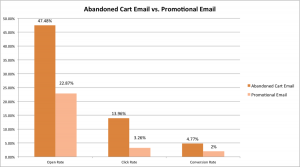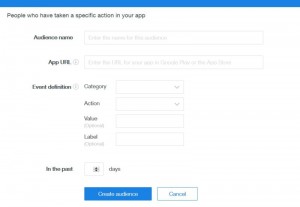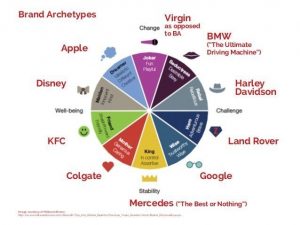
Social media is just like any other marketing channel. But in B2B, it’s hard to know if you’re using it effectively, especially with the evolving platforms and speed of adoption. While some B2B brands have mastered the art of social, others struggle to figure out a results-driven method—whether that’s implementing an editorial calendar, hiring a dedicated team or building out a strategy.
And like any other channel (email, search, media), you need goals. Without them, you could be wasting your time—or worse, causing damage to your overall marketing efforts. With tools like Hootsuite, Sprinklr and others, you can manage your entire social presence together, but if you’re not sure of what your end goals are, you won’t know how to use them effectively. The real question becomes, “What are you trying to build?”
Here are the four most common goals people use to build a social media strategy and suggestions on how to measure the effectiveness.
- Brand AwarenessYou want to get in front of people. You built your company profiles on Twitter, Facebook, LinkedIn and a few other social networks you think make sense for your business. You know that certain segments of your audience favor certain channels over others and are using that knowledge strategically to engage them. You’ve even gone as far to build a content strategy to keep a consistent voice. Now that you have the foundational elements, it’s time to amplify.
Boosting your posts, images and content beyond your web and social traffic should guide your plan and tactics. Paid social is a great thing to consider here, as well as creating content that encourages your audience to like, share, post and get your content in front of their networks. Think of content that’s helpful or informative instead of just a sales pitch.
Metrics to consider:
- Engagement – The number of unique people who are responding to your content (clicked, liked, commented on or shared your post). This is key because the more people that interact with your content, the more their network will see that interaction.
- Reach/impressions – If more people see your brand and your content, that means you’re doing something right. Aiming for high reach/impressions is ideal when you’re building your brand.
- Follower growth – Increasing the number of people who are interested in your brand is the ultimate goal. Anything you can do here to measure demographics to ensure your growth matches your ideal customer is an added bonus.
- Lead Generation People are noticing you. You’ve gained followers, you’re getting a healthy number of impressions and people are engaging with your posts. Now, it’s all about targeting the right audience with the right content. High quality content across different stages in the buying journey is key, but you should balance “free” content with gated content. The free content (if they find it engaging) will entice them to provide personal information for more: in other words, “Hello, lead!” Highly targeted paid social is a good tactic here as well as good content placement with influencers and optimizing timing of posts to drive clicks.
Metrics to consider:
- Link clicks – You want people to read and interact with your content. This might be deeper content that requires followers to click through to different formats.
- Form conversions – Ultimately, you need to gather people’s information as well as how posts lead to clicks and later conversions so you can increase clicks at each stage.
- Opportunity influence – You need to set up your automation and CRM platforms to track throughout the buying journey (not just the last touchpoint) to fully understand the impact. This will help you figure out if and when targets are dropping out of the journey.
- Reputation Are you noticing negative posts on your owned channels? What is your social listening tool saying about your sentiment? Do you want to change the conversation from your legacy vision to a new one that will launch more growth? If so, it’s time to proactively change the conversation around your brand.
Make sure any underlying problems that might contribute to negative posts are fixed and/or that you’ve tested your new positioning with your target audience. Then, when building and creating your content plan, make your company feel like a human. This will connect you with your audience on a more one-to-one level and add value by solving peoples’ problems. Most importantly, ask for people to interact with you and leave feedback. You’ll be surprised at what asking people does for increasing participation and changing the conversation.
Metrics to consider:
- Sentiment – This measures how people feel about your brand by looking at the positive and negative words used to talk about you. Use your monitoring service to measure overall sentiment online and how this changes over time. This will be a longer term goal as changing sentiment is hard work. It doesn’t happen overnight!
- Ratings – How many stars do you have? Be sure to keep track of your online ratings on your site and elsewhere (like Yelp, Google ratings, Glassdoor, etc.). Hopefully, you’ll see a trend toward the positive over time.
- Topic of audience’s posts – Set up a manual measurement to track your audience’s comments, posts and tweets. You are looking for a decrease in complaints or an increase in topics you’d like for them to focus on.
- Number of followers – As you turn things around, more and more people will be happy to engage with you.
- AdvocacyPeople like you. They really like you! You’ve built a following and have a good reputation online, but you want to increase your influence with your target audience and spread the conversation about your brand to new audiences. It’s about building a community of people who love what you do and have influence over their peers. You want people to talk about you (with a high majority of positivity), love working with you and share your news. Joining online communities such as Influence Central is a good tactic here as well as participating in special events for advocates.
Metrics to consider:
- Number of mentions and sentiment by advocates – See how often people you identify as good advocates talk about you and if it’s more positive or negative.
- Number of shares – Are people sharing your content and talking about you?
- Overall mentions and sentiment – Are more and more people talking about you in a positive light?
- Visits from your advocates to your own sites – Are you seeing traffic from your advocates’ profiles and websites to your own? Are people clicking on tracked links you are providing to them?
Having strong goals and a strategy for social media will set you up for success. It will guide you on what tactics to use and content to build, as well as give you clear measurements to show ROI or areas for improvement. The more comfortable you get with these goals, the more you’ll see that none of these are mutually exclusive and you can continue to grow your strategy by adding on new goals or focusing on others. Just don’t forget to monitor your metrics as you go and adjust accordingly.
Digital & Social Articles on Business 2 Community(34)










